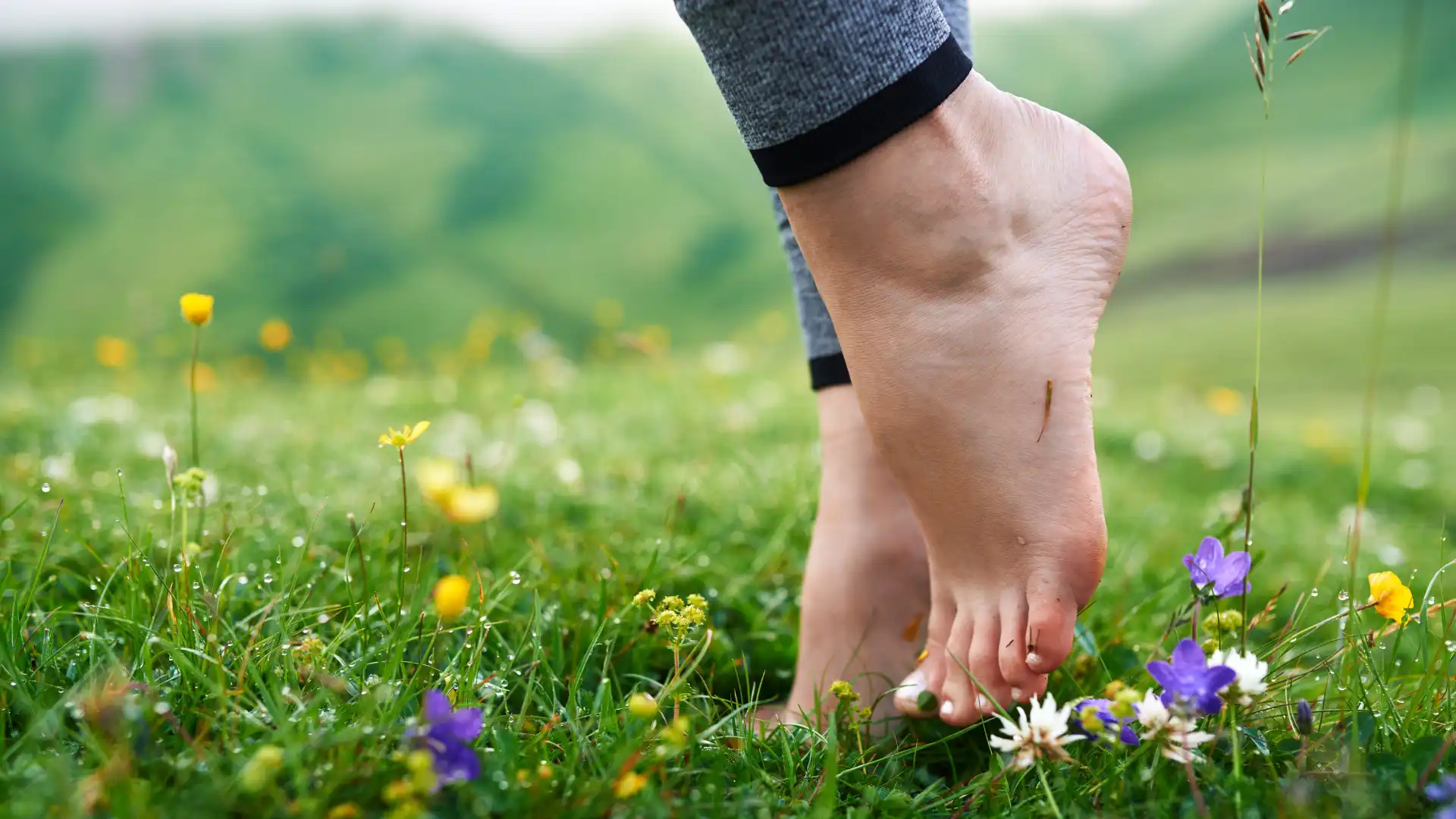Shed Those Shoes: Being Barefoot Benefits Brain Development and More

It drove my mother crazy when I went barefoot as a kid. Still does, because I’m in stocking feet in the fall and winter and barefoot the rest of the time!
I can’t stand the confinement of shoes. And I’ve long been an advocate for children to go without them. As I wrote in the very first edition of my textbook, Active Learning Across the Curriculum: Teaching the Way They Learn:
“Children have been moving in sneakers for physical activity for so long we seem to have forgotten that feet do have sentient qualities. They can be used to grip the floor for strength and balance, and their different parts (toes, ball, sole, heel) can be more easily felt and used when bare. Furthermore, there is evidence indicating that going barefoot strengthens feet and improves body alignment. Young children feel a natural affinity for the ground that can be enhanced by removing all the barriers between it and the feet.”
Nothing startling there. But you might be surprised to learn that there’s scientific evidence that barefoot is better. Among other things, it’s important to the development of the nervous system and optimal brain development as well!
It turns out the feet are the most nerve-rich parts of the human body, which means they contribute to the building of neurological pathways in the brain. Covering them in shoes, therefore, means we’re eliminating all kinds of opportunities for children’s brains to grow new neural connections.
Why Do We Think Wearing Shoes is so Important?
Of course, it’s worry that keeps parents and teachers from setting children’s feet free. One common concern is that kids will contract germs by going barefoot. (That’s my mother’s issue.) But our skin is designed to keep pathogens out. We’re much more likely to become ill from touching something with our hands, which are in contact with so many things during the course of a day. I’d hate to think we’d keep kids in gloves all day to prevent germs!
There’s also concern about injury. But being barefoot actually toughened up the bottoms of the feet, so unless children are walking through a construction site full of nails, the likelihood that they’ll injure themselves is slim.
The truth is, many podiatrists contend that shoes can be much more harmful to little feet than nakedness can. Feet should be allowed to develop naturally, not conform to the shape of a shoe. Also, shoes can often constrict the movement of the feet, and can negatively impact walking, balance, sensory development, and proprioception (the understanding of our body’s orientation in the space around us).
Promote Barefoot Time
If you’re worried about the potential chaos of many children shedding shoes and socks at the same time, you can establish and practice routines for removing and retrieving footwear. Socks should be put inside shoes and shoes lined up against a wall or placed in each child’s cubby. And should you have children who are reluctant to remove shoes and socks, you can encourage them with concepts like “barefoot time” or, for toddlers, “tippy-toe time.” They’ll also become more enthusiastic about bare feet if you remove your shoes and socks as well.
More on this topic from special contributor and YogaUOnline editor, Charlotte Bell – Foot Yoga: Tap Into the Power of Your Own Two Feet.
Body Sensing: Intuitive Yoga for Myofascial Release – A course from YogaUOnline and Yasmin Lambat.
Reprinted with permission from Rae Pica.com
 Rae Pica is an education consultant specializing in the development and education of the whole child. She is the author of 19 books, including her latest, What If Everybody Understood Child Development?: Straight Talk About Improving Education and Children’s Lives. Rae is known for her lively and informative keynotes for educators and parents and has shared her expertise with such groups as the Sesame Street Research Department, the President’s Council on Physical Fitness and Sports, Gymboree, Nike, and state health departments and schools throughout the country.
Rae Pica is an education consultant specializing in the development and education of the whole child. She is the author of 19 books, including her latest, What If Everybody Understood Child Development?: Straight Talk About Improving Education and Children’s Lives. Rae is known for her lively and informative keynotes for educators and parents and has shared her expertise with such groups as the Sesame Street Research Department, the President’s Council on Physical Fitness and Sports, Gymboree, Nike, and state health departments and schools throughout the country.



